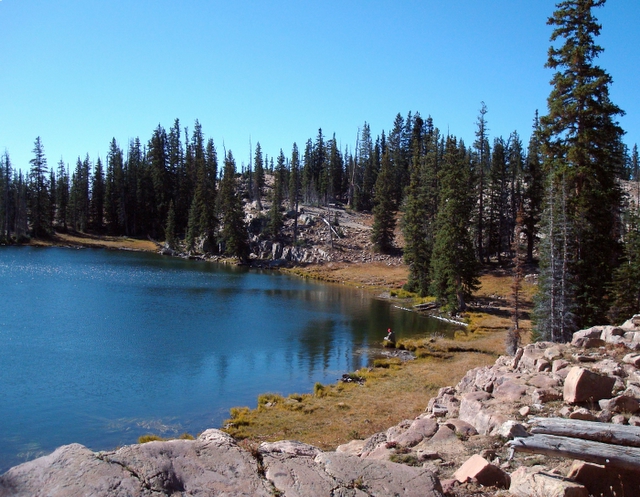
completing nest cell
Courtesy and
Copyright © 2011 Jim Cane
 Pupa of
Pupa of
Sceliphron caementarium
Courtesy and
Copyright © 2011 Jim Cane
The recession has slowed housing starts, but builders of clay dwellings remain busy. Millions of clay homes are built this and every summer in Utah. These dwellings can disintegrate in a summer cloudburst, so you’ll find them beneath overhangs like rock cliffs, or under bridges and the eaves of your house.
These free-standing mud homes are built by a few dozen species of solitary bees and wasps. Among them is the mud dauber, Sceliphron caementarium, a big leggy wasp found throughout Utah. The female wasp constructs hollow clay units one at a time, each the dimensions of a pitted date. The mother mud dauber gathers the wet clay in pellets. At the nest site, she draws the pellet into a ribbon of clay which becomes the next arch of the tubular nest. While working the clay, she audibly buzzes her flight muscles. This vibration visibly liquefies the clay for a few seconds. This strengthens its bond, much as workers in concrete do using large vibrating probes.
The mother wasp then collects spiders, often plucking them straight from their webs after a pitched battle. She permanently paralyzes each spider using her venomous sting. The venom is not lethal. Rather, it is paralytic, keeping the spider alive and fresh but helplessly immobile, a gruesome spider buffet for her grub-like larva to eat. Each hollow nest is packed with a half dozen spiders, one of which receives her egg. In a few weeks time, the growing wasp larva finishes eating its buffet and pupates, becoming dormant for the winter.
Nest building and provisioning by these wasps is a complex result of heritable instincts tailored to local circumstances by learning. It is also a rare trait among insects, most of whom simply lay their eggs and leave. Through observation and manipulative experiments, students of animal behavior have investigated mud-building wasps for well over a century. If you have mud daubers around your home, grab a cool drink, pull up a chair, and enjoy watching their home-making labors.
This is Linda Kervin for Bridgerland Audubon Society.
Credits:
Images: Courtesy & Copyright Jim Cane, Bridgerland Audubon Society
Text: Jim Cane, Bridgerland Audubon Society
Additional Reading:
“The Wasps”, Evans, Howard E. and Eberhard, Mary Jane West, 1970. Ann Arbor, University of Michigan Press. 265 p. illus. https://www.amazon.com/Wasps-Howard-Evans/dp/0715360604
“Bees, wasps, and ants : the indispensable role of Hymenoptera in gardens”, Grissell, Eric. 2010, 335 p. https://www.amazon.com/Bees-Wasps-Ants-Indispensable-Hymenoptera/dp/0881929883









